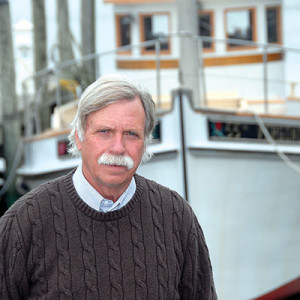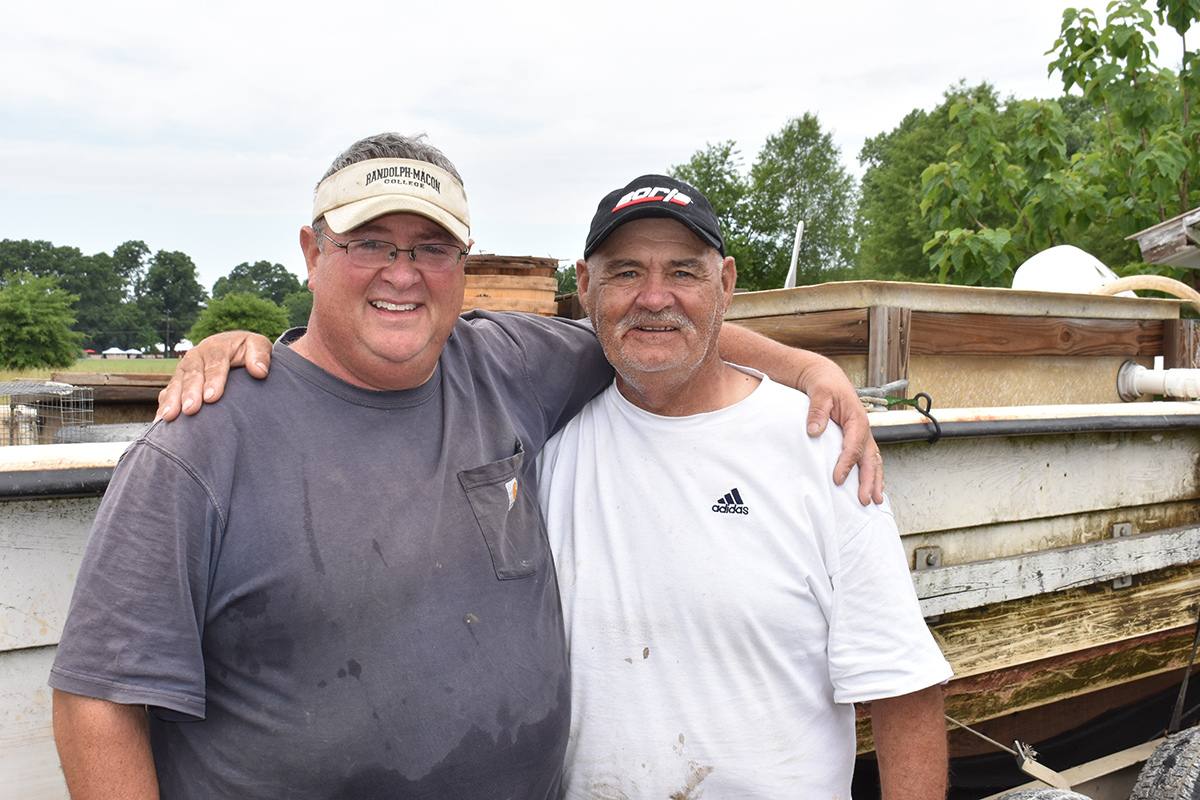Thomas and Lee Walton are the father-and-son commercial fishing team who own Walton Seafood in Urbanna, Va.
After the August Storm of 1933, Thomas’ grandfather Avery Payne moved from Tangier Island with his family to Urbanna where he worked the water and operated Payne’s Crab House until his death in 1977. As a boy, Thomas worked with his grandfather. And when Avery died, he left a high school teaching and coaching job to help with the family business.
He eventually started Walton Seafood, where today he and his son Lee operate an oyster shucking house and a softshell-crab shedding facility. They harvest peeler crabs, which are blue crabs in molting stages. During crab runs, they work out of three 24-foot Carolina Skiffs powered by 70-hp Suzuki outboard engines. All three boats are trailered on Hi-Tech Marine trailers, and each one has its own truck for hauling.
Those peeler runs come at different times and at different places. Two rigs are in motion all the time, being driven and off-loaded into rivers and creeks. The third rig is a spare available when a boat or truck breaks down.
The skiffs are also used in Virginia’s public oyster fishery and on state leased private grounds. In addition the Waltons own a 39' x 11' x 32" deadrise fiberglass boat.
The larger boat is worked exclusively in the public and private oyster fisheries. The Virginia Marine Resources Commission rotates public oyster grounds on a three-year rotation. Sometimes during oyster season, the only public grounds open are on Tangier Sound, which is a far distance for the Waltons to reach daily in a Carolina Skiff. The 39-footer has overnight accommodations.
The Waltons are optimistic about the future of the bay’s fisheries but are concerned that regulations will over time cut into catch and profit. Crab prices are up so far this season. During the interview in June, a customer stopped by the seafood house to buy a half bushel of hard crabs. Hard crabs are a marketable bycatch caught in peeler pots.
Lee asked, “Do you want No. 1s or No. 2s?”
“You might want to tell her the price,” says Thomas. “That might make a difference.”
“No. 1 jimmies (male crabs) are bringing $90 a half-bushel, while No. 2 crabs (mixture of smaller jimmies and female crabs) are $35 a half-bushel.”
She agreed that the price did make difference and took a half-bushel of No. 2s at $35.







